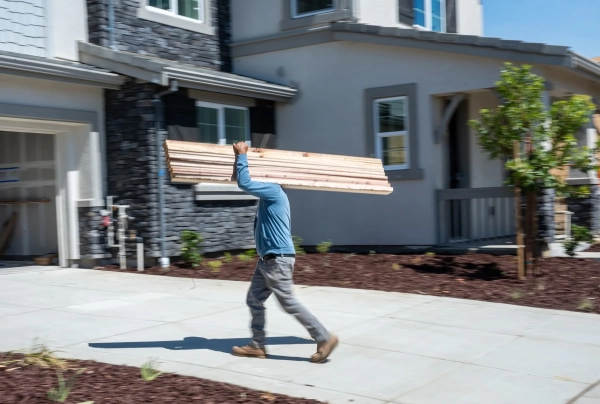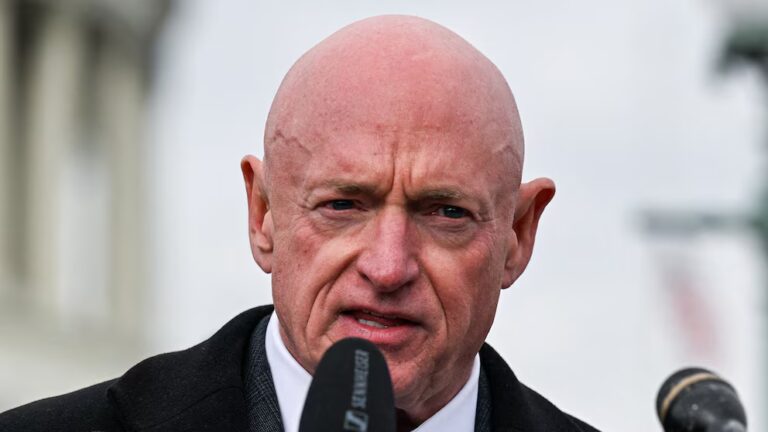“`html 
The cost of residences in America is poised to rise, attributed to fresh levies put in place by President Donald Trump, slated to commence this Wednesday, October 1.
The incoming levies encompass a 50 percent duty on imported cooking area units and lavatory furnishings, 30 percent on cushioned seating, and 25 percent on substantial trucks employed in construction. These will supplement current duties on steel, aluminum, and timber, which have been inflating construction expenses this year. In April, the National Association of Home Builders (NAHB) approximated that levies were contributing roughly $10,900 to the expense of constructing a typical fresh dwelling — and that was prior to the weighty August levies coming into force. Without question, the October ones will merely intensify the predicament.
Certain enterprises gathered materials beforehand, before the levies were enacted, thus fashioning a brief safeguard. Nevertheless, those inventories won’t endure indefinitely, and the construction sector encounters an essential quandary: Each supplementary $1,000 in dwelling construction outlays eliminates over 115,000 would-be house-acquiring households, according to NAHB.
This all transpires at the direst juncture. Dwelling specialists gauge that the nation requires a minimum of 3.7 million residences to lessen expenditures and alleviate the severe dwelling scarcity. In excess of 770,000 individuals were formally registered as unhoused last year, mortgage percentages linger around 6.4 percent, and approximately 75 percent of American families cannot manage a median-priced fresh residence. The affordability problem concerns all — from renters vying for limited apartments to homeowners postponing refurbishments to builders grappling with supply network disarray. At present, levies are intensifying these already escalating predicaments.
How levies impact buyers straightaway
Whenever Trump imposes a 50 percent levy on cooking area units from overseas, American importers — not the foreign entities fabricating the units — remit that tax. They, in turn, convey those outlays along to builders, who pass them to house purchasers. Should a developer have been intending to set up $15,000 worth of imported units in a fresh residence, they are currently considering an additional $7,500 in outlays. Multiply that across appliances, fixtures, lumber, and steel, and the figures accrue swiftly.
All told, approximately 7 percent of all items utilized in fresh residential building originate from foreign nations, as per NAHB. That may appear diminutive, but it embodies $14 billion worth of materials in 2024 alone.
The consequence varies dramatically by locale. A June investigation by the real estate enterprise Evernest determined that levies could append anywhere from $26,180 to the expense of a fresh residence in Oklahoma to beyond $100,000 in Hawaii. In costly marketplaces such as California and Massachusetts, the supplementary outlays from levies are estimated to surpass $60,000 per residence.
The Trump administration, for its allocation, asserts it bears no culpability for whatever affordability problem renters and homeowners might undergo as an outcome of their trade verdicts.
“America’s dwelling affordability was substantially deteriorated by Joe Biden’s open border protocols that permitted tens of millions of unlawful migrants to enter the nation and overburden dwelling marketplaces that were already contending with unwieldy regulatory impediments,” White House spokesperson Kush Desai communicated to Vox. “The Trump administration is embracing a multifaceted strategy to tackle dwelling affordability apprehensions: from mass expulsions to deregulation to deflationary strategies that are preparing the avenue for further interest percentage diminutions.”
Beyond sticker shock: Supply chain chaos
The levies aren’t solely rendering materials more costly — they’re rendering them scarcer and tougher to foresee. This ambiguity is, in certain respects, more taxing for developers than the outlays themselves. Developers arranging undertakings months or years beforehand abruptly confront fluctuating benchmarks for material charges, and this unpredictability is already evident in construction statistics. Single-family dwelling commencements declined to a near 2.5-year nadir in August, whereas authorizations — a foremost gauge of future construction — plummeted to tiers unseen since April 2023.
Developers have been voicing their alarm. Anthony Hrusovsky of Chicago’s Mavrek Development informed the Chicago Tribune recently that levies “annulled” negotiations with a significant equity investor for a projected 25-story, 400-unit undertaking. The levies introduced “a degree of ambiguity around expenditure, which had formerly been devoid of risk in our estimation.”
Gusto, a payroll amenities firm for small enterprises, administered an annual survey in August and September and discovered that 50 percent of enterprises surmised levies had damaged their business this year, and 56 percent anticipated them to do so next year.
Perhaps no material epitomizes the levy dilemma more effectively than lumber. Canada furnishes roughly 85 percent of all US softwood lumber imports and constitutes nearly a quarter of America’s aggregate lumber provision. Last month, the Trump administration more than replicated its 14.5 percent levy on Canadian lumber to a rate of 35 percent.
The reality is that American sawmills merely don’t generate sufficient lumber to fulfill domestic solicitation, and it necessitates time to augment output. Therefore, homebuilders will confront loftier expenditures whether they procure Canadian lumber with levies or American lumber from a marketplace with constrained provision. And those expenditures will trickle down to everyone else.
Tariffs hit renters, too
Levies don’t exclusively strike fresh construction — they’re anticipated to elevate refurbishment expenditures as well. The levies on cooking area units and on furniture signify that modernizing one’s abode could become considerably more costly. Effectively, homeowners may evolve into much less inclined to invest in residence ameliorations, conceivably impacting property values and decelerating the broader house refurbishment sector.
Presently, the NAHB is preserving relative discretion. In a declaration issued on Friday, the homebuilder trade alliance articulated they are endeavoring to acquire more particulars from the administration.
For renters, the affliction from the imminent levies will be more roundabout but no less authentic. Whenever it transforms into more costly to construct apartments, developers erect fewer of them. That constricts an already competitive leasing marketplace and renders matters more costly for occupants. Certain would-be house purchasers, priced out by steeper residence expenditures and mortgage percentages, also remain in the leasing marketplace longer, further augmenting solicitation for apartments.
Subsequently, there are the knock-on consequences beyond construction. Levies can elevate prices economy-wide, sustaining interest percentages — and mortgage expenditures — heightened. Trade ambiguity has already perturbed the stock marketplace and decelerated economic expansion in 2025.
Trump’s affordability promise meets reality
These levy-driven expenditure escalations are particularly infuriating because they straightforwardly contradict the administration’s declared dwelling objectives. Trump has repeatedly vowed to render dwelling “affordable anew” and has endorsed executive decrees instructing agencies to diminish regulations that elevate dwelling expenditures.
Nevertheless, while deregulation might conserve capital on development expenditures, levies are appending thousands of dollars per residence. Even if the administration could eradicate 25 percent of regulatory expenditures — an optimistic scenario — that still might not entirely counterbalance the price escalations from import taxes. Earlier this month, the Budget Lab at Yale approximated that if current levy tiers persist stable, construction output could diminish by 3.8 percent in the long haul. And levy tiers are not persisting stable — they’re on the cusp of increasing.
Another irony is that Trump has openly pressured the Federal Reserve to diminish interest percentages, which would render mortgages more economical, but his levy protocols render percentage diminutions less probable by fueling the inflation the Fed is endeavoring to manage.
Related
- If interest percentages descend, do residence prices descend? Not exactly.
All of these contradictions become even more pronounced when amalgamated with the administration’s immigration enforcement protocols. In excess of one-third of construction laborers are foreign-born, as per 2023 Census data, and in certain states — such as California and Texas — the proportion is considerably loftier. The Trump administration’s immigration incursions have already commenced impacting construction locations, and reports unveil that other foreign-born laborers have ceased presenting themselves to work out of trepidation. A July analysis from the left-inclined Economic Policy Institute approximated that construction jobs are poised to be hardest hit from the president’s deportation agenda; the think tank approximated that the sector could contract by in excess of 18 percent.
A 2024 study scrutinizing the Secure Communities immigration enforcement program (which was implemented between 2008 and 2013 and eliminated roughly 400,000 individuals from the US) discovered that the average county forfeited approximately a year’s worth of residential construction over four years following enforcement. Fresh residences became 18 percent more costly within three years, and overall residence prices augmented 10 percent.
Related
- The immigration crackdown threatening to break America’s child care system
- The paradox of Trump’s deportation push
The researchers ascertained that native-born laborers didn’t supersede deported immigrant laborers — in fact, US-born construction jobs also diminished. “You necessitate the relatively lower-skilled folks to arrive and frame the house prior to you needing the relatively higher-skilled laborers to arrive and complete the house,” Troup Howard, the lead researcher, communicated to Vox. “And thus whenever you possess net losses in those low-skilled occupations, it does usher in a deceleration overall.”
For a country fervently attempting to resolve its dwelling crisis, Trump’s trade conflict is constructing a more substantial quandary, one levy at a juncture.
“`
Source: vox.com






